This article discusses the common types of industrial filtration equipment used for dust collection.
February 16, 2023

Phil Rankey, senior applications engineer, and Tim Rosiek, senior product manager, Parker Hannifin, Industrial Gas Filtration and Generation Div.
When considering dust collection and filtration equipment, there are differences in the equipment and its filters and accessories that are critical to performing the expected extraction and filtration of particles that may be suspended in the indoor ambient industrial work environment. While the essential function of dust collection equipment is the same – think large vacuum cleaner to capture unwanted dust – the method of this function and its effectiveness can be quite different and is dependent on many factors.
Some of these factors include safety considerations for the workers, the environment, the equipment, and the facility. Items such as the filter efficiency level, the filter media construction, the type of contaminant, the method of collection (at the source or generally in the room (ambient) or area), the amount of airflow required, and even the particle transport velocity inside the duct all need to be taken in to account for every system. Additional devices such as particle monitoring equipment, explosion venting, spark detection systems, suppression devices, and secondary filtration may also be required for a successful operating system that meets the demands of a particular application.
Other factors may be convenience related such as the available input power, compressed air, geographic location, the amount of space or footprint requirements, and the physical location of a dust collector needs to be planned at the design stage. An extensive duct system in a facility may be ideal for some, but for others that perhaps change work cells often, it could be a hindrance both in terms of cost and convenience.
Types of Dust Collection Equipment
Dust collection equipment can be broken down into four primary categories:
1. Filtration by impingement. This is the use of some type of filtration media to physically bar the particulate from getting past the filter media and is the most common solution used for particle capture and filtration.

2. Filtration by water. As it sounds, the use of this type of equipment forces the dust to enter a watered area having to make a “treacherous” path, the water is used to separate the dust from the airstream and force it to settle or drop out, toward the collection area of the unit.
3. Filtration by centrifugal force. Again, a very simple, yet effective method (to a certain degree of efficiency) of using centrifugal force (a cyclone-shaped dust collector primarily) and the velocity of the incoming airstream to separate the particulate from the airstream leaving essentially cleaned air to be discharged back to the atmosphere.

4. Filtration by electrostatic charge. Collectors of this type use an electric charge to electrify the airstream (think back to running a balloon across your hair and then sticking the balloon to the wall) and then having the air pass through oppositely charged plates to force the particulate to “stick” to those collection plates. The cleaned air then continues to make its way through the collector back out to the workplace or the atmosphere as the situation dictates.
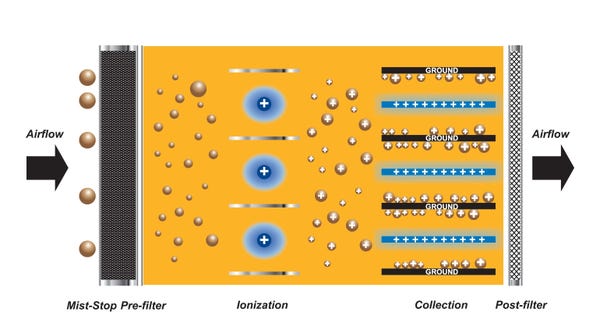
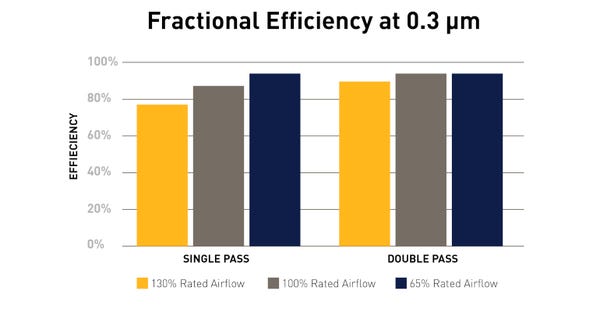
Understanding the Dust Collection Process
What these systems have in common is that they all use a mechanical air moving device (AMD), such as an electrically driven exhaust fan, to stimulate the surrounding air with suspended particulate to be drawn into the collector or its capture device so that the forces of the device can act on the dust-laden airstream to separate the dust from the air using the methods described earlier.
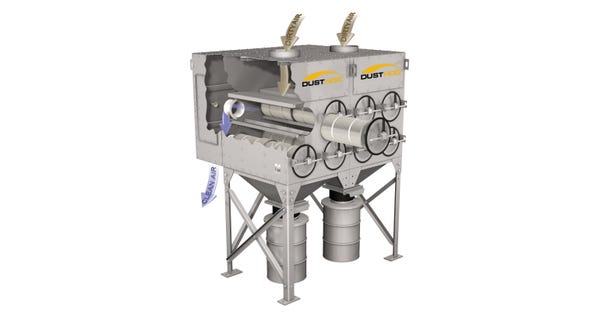
Each of these devices has an inlet area where the contaminated air is drawn into the device. Inlet areas can be part of the collector itself or maybe some type of collection hood or extraction arms that are used to help direct the air for the most effective capture of particulate.
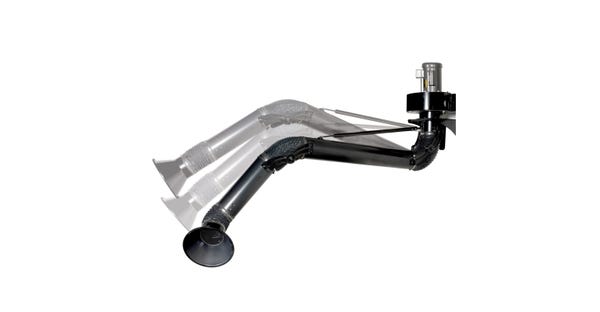
Each device also has what is commonly termed the “dirty side” of the collection device where the contaminated airstream has entered the unit. It is in this area where one of the cleaning methods mentioned acts on the airstream to separate the dust from the clean air. There are instances--depending on the type of particulate--where a pre-filtration or separation stage may be placed before the main filtration stage such as a pre-filter module, abrasive inlet module, air distribution module, or extended “dirty air plenum”, that are used to remove large and heavy particles that are transported in the airstream to increase separation efficiency and reduce premature loading of the main filter stage.
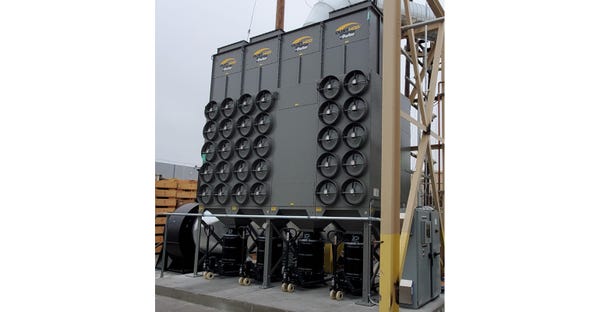
Once the method (either media, water, centrifugal, or electrostatic) has separated the contaminant from the air stream, the separated particulate moves to a collection area such as drums, waste-bin, hopper, or recirculated for easy disposal and/or maintenance.

The cleaned air then moves into the “clean side” of the collector where it may go through some type of secondary filtration (for further treatment) to increase particle removal efficiency or perhaps a carbon or other type of post-filter for odor control or similar need.
Once the air has traveled through its various filtration methods, it is now ready to be returned to the workplace (if desirable and suitable) or to be released to the outside atmosphere as clean air. Additional post-filtration can be added to the primary filtration system to ensure contaminant is captured if it bypasses the primary filter. Post-filtration is also added as a secondary, high-efficiency level to remove submicron particles and contaminants before the air is returned to an indoor space or released into the atmosphere. Mechanical gauges or particle monitoring systems can be employed to ensure that the primary and secondary filtration stages are in correct operating condition and not releasing unwanted particulate back into a workspace or outside environment

Unique System Differences
The dust collection unit that embraces filtration by impingement includes baghouses with typically long, narrow diameter filter bags or pleated filters, cartridge collectors with larger diameter filters capable of holding a large quantity of filter media, shaker collectors that have pocketed filter bags, and media collectors that hold some type and configuration of filters in either a panel, box, cartridge, bag, or other configuration. Each of these systems uses the inherent resistance path through the media to stop the particulate from passing through while still allowing clean air to pass. Units with increased dust collection result in a higher resistance across the filters and are often equipped with filter cleaning mechanisms such as compressed air pulsing or mechanical shaking.
The collection units that use water for dust separation can be round, rectangular, or square, but all have in common a holding area of water where the incoming dust-laden airstream is forced to become entrained in the water and then separated usually by causing the dust-laden water to take a different path from the airstream. The air is stripped of the dust and allowed to pass through the system back to the workplace or the environment. The dust then settles in the bottom of the collector as sludge that must be emptied or sluiced to a settling tank for future disposal. The nature of these collectors makes them especially suitable for potentially explosive metal dusts and similar pollutants. These units have an inherently high, though consistent pressure drop but do require frequent maintenance with water replacement and the removal and disposal of wet contaminants. Also, consideration and caution must be used when applying these collectors to certain types of dust such as aluminum dust and fines.
The most common collector for using centrifugal force for cleaning an airstream is the cyclone. There are several arrangements and configurations of these units. These collectors are very effective at separating large particulates without the use of filters or water but are not nearly as efficient as their media counterparts. For this reason, in today’s environment, it is common to add additional separation, such as media and typically after the cyclone, to ensure the air returning to the environment or workplace is as clean as desired or required.
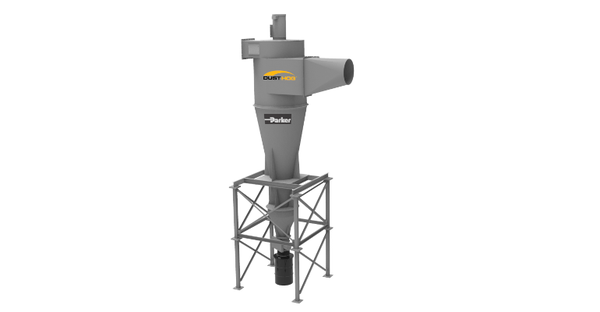
Electrostatic precipitators (ESP) have no barrier filters except for metal mesh pre and post-filters. They use charged wires or metal ionizers in the incoming airstream to apply energy to only the particulate matter (not the airstream), which ionizes them giving the ESP collector the benefit of lower energy consumption. These charged particles are then collected on plates placed downstream that have an opposite charge applied to them. ESP units are effective on very fine particulates including oil mist and smoke and have been used in the engine rooms of ships to clean the air and reduce the build-up of flammable oil accumulations. ESPs are not effective on large particulate or heavy concentrations as the particulate will not be suitably charged and therefore not collected on the plates. The usage in dust collection applications is limited. ESP collectors require cleaning of the collection plates which will often involve a water wash cyclone or the physical removal of the plates for off-site cleaning. Some ESP filtration systems will add carbon or potassium permanganate final filters to address odors.
Which System is Best?
The use of each of these types of equipment varies as much as each application, company, requirement, and any local, state, and federal standards or regulations required in every specific application. A safety professional, Certified Industrial Hygienist, or qualified industrial pollution control specialist can help navigate, not only the specific type of dust collection equipment that is best for a particular need, but also specify the additional considerations to ensure the best, safest, and most effective arrangement for one’s plant operating objectives. The goal is always to design and provide systems that promote safe and healthy workplaces, solutions that support greater productivity, and strategies that protect both human and mechanical investments, all while sustaining clean air for both the workplace and the environment.
Phil Rankey is senior applications engineer and Tim Rosiek is senior product manager, Parker Hannifin, Industrial Gas Filtration and Generation Div. (Lancaster, NY). For more information, call 800-343-4048, email [email protected], or visit parker.com/airquality.
You May Also Like


